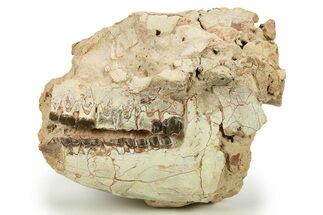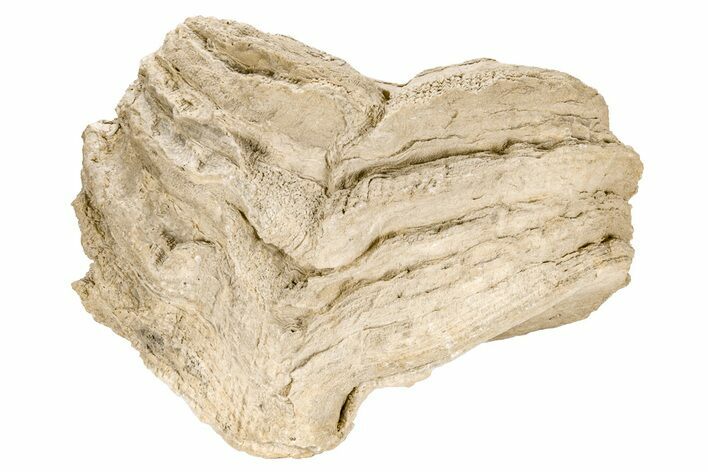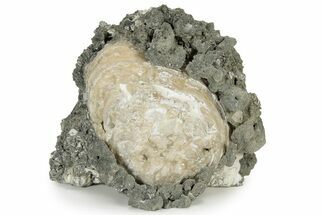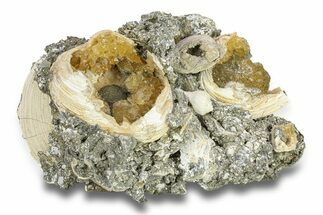This Specimen has been sold.
9.4" Cretaceous Rudist (Durania) - Kansas
This is a 9.4" wide fossil rudist of the species Durania maxima. The ciircular shape of these organisms is fully preserved in this fossil. They come from the Late Cretaceous Niobrara Formation (~83 million years) in Gove County, Kansas. Portions of this specimen are coated in tiny oyster fossils.
A rudist is a ring-shaped marine heterodont bivalve that arose during the Late Jurassic and died out near the end of the Cretaceous. Durania maxima rudists had heavy cone-shaped shells, often with a large circular collar, and are typically found in the lower third of the Smoky Hill Chalk.
The Smoky Hill Chalk Member of the Niobrara Chalk formation is a Cretaceous conservation Lagerstätte, or fossil-rich geological formation, known primarily for its exceptionally well-preserved marine reptiles. It outcrops in parts of northwest Kansas--its most famous localities for fossils--and in southeastern Nebraska. Large, well-known fossils excavated from the Smoky Hill Chalk include marine reptiles such as plesiosaurs, large bony fish such as Xiphactinus, mosasaurs, pterosaurs, and turtles.
SPECIES
Durania maxima
LOCATION
Gove County, Kansas
FORMATION
Niobrara Formation
SIZE
9.4 x 9.1"
CATEGORY
ITEM
#208173
We guarantee the authenticity of all of our specimens.
 Reviews
Reviews














